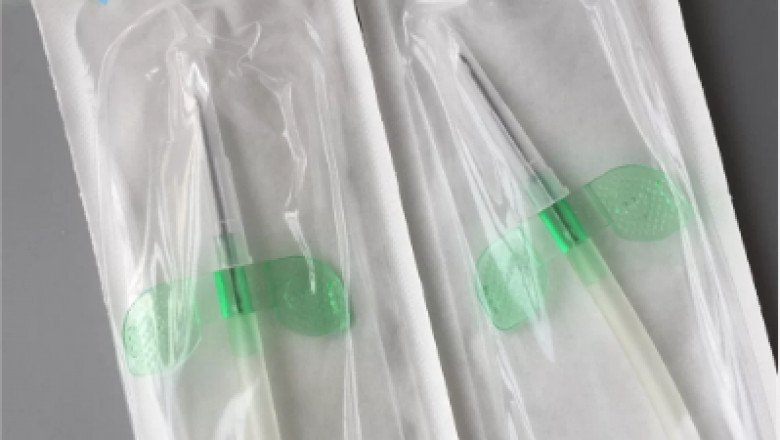
views
Arteriovenous fistula puncture method
The use of good puncture methods can effectively reduce the occurrence of complications. Unreasonable puncture methods can lead to occlusion, stenosis, and loss of function, which can cause major problems for patients.
At present, there are two main puncture methods commonly used in clinical practice, namely the rope ladder puncture method and the blunt needle buttonhole extraction method.
1 Blunt needle buttonhole extraction method
The blunt tip of the puncture needle has no sharp edges, which avoids damage to the tunnel during puncture; at the same time, the degree of fibrosis of the punctured vessel is reduced, thus reducing complications such as stenosis and pseudo-angioma formation; in addition, it has no high requirements on the condition and length of the vessel, and can be used in any procedure of AVF.
2 Rope and ladder puncture method
The rope-ladder puncture method can effectively ensure uniform vascular expansion and reduce complications such as pseudoaneurysm. It reduces the incidence of bleeding and painful fistulae.
Arteriovenous fistula puncture angle
The human skin is composed of epidermis, dermis and subcutaneous tissue, and the skin thickness is 1-4 mm. Compared with small-angle puncture, a higher angle shortens the distance from the skin to the vessel to a certain extent, reduces the resistance to needle entry and skin slippage, and the puncture needle enters the wall of the internal fistula for a short time, so that blood can enter the puncture needle quickly after touching the blood. The nurse found during the operation of the needle back into the blood immediately after flattening the angle in the direction of the fistula parallel to gently push the needle into. This greatly reduces the damage to the vessel wall and the skin and subcutaneous tissues surrounding the vessel, delays damage to the vessel from repeated punctures and the formation of pseudoaneurysms, and prolongs the life of the arteriovenous fistula.
Compared to the usual 20° puncture angle for fistula, a 35-40° approach can effectively reduce patient pain, increase the success rate of one-time puncture, reduce blood leakage from the puncture site, and help prevent complications of fistula puncture, which is a simple and safe method.
Arteriovenous fistula puncture puncture site
Vascular selection: Choose relatively straight vessels with flexible segments to be punctured, avoiding joints and venous valves, and too small vessels to be punctured.
Puncture point: The arterial puncture point should be at least 5 cm away from the anastomosis and require a strong tremor in the segment. The venous puncture point should be at least 8cm-10cm away from the arterial puncture point.
It is best not to puncture in the same vessel as the artery; the arterial puncture needle should be punctured against the direction of blood flow and the venous puncture in the direction of blood flow. The purpose is to reduce recirculation. The puncture point should be at least 1 cm from the last needle entry point or the button method should be used. (button method, rope ladder method)
Reasons for bleeding
1, incorrect time of use of internal fistula, premature use of internal fistula in immature cases, the patient's venous wall is very fragile and thin, once the pressure exceeds the limit of tolerance it is easy to cause vascular damage, and then hematoma and blood leakage.
2. Incorrect puncture method, in which the nursing staff directly punctures the arterialized vein through the patient's skin using a puncture needle.
3. Multiple puncture failures, which in turn lead to venous perforation and bleeding.
4. Low compliance of the patient with the treatment and irritability during puncture.
Key points for successful arteriovenous fistula puncture
The distance between the arteriovenous puncture point and the anastomosis point is at least 5 cm, the needle tip is kept in a centripetal or centrifugal direction during puncture, the convenient puncture site + the right angle, perfect!
2, when performing a new fistula puncture choose the elbow of the fistula or an arterialized vein close to the elbow for puncture, it is usually recommended to start using it after 4 weeks for the first fistula use, it is better to be able to maintain it after 8 to 12 weeks.
3, good patient education to explain to patients the importance of arteriovenous fistula, the need to pay attention to the process of puncture, to obtain the cooperation of patients, but also a needle is a winning formula.












Comments
0 comment